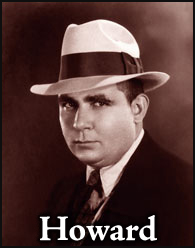Wednesday, March 24, 2010
posted by Deuce Richardson
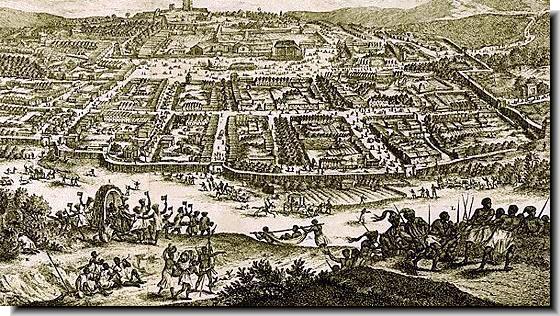
In welcome news, TC just learned that Charles R. Saunders has a fresh blog entry posted at Drums of Nyumbani, his website. The title of this post is “The First Ghana.” Much like his article, “The Epoch of Kush,” this piece by Saunders explores the rich history of sub-Saharan Africa. Another similarity betwixt the two is that both were written during the ’70s by CRS for one of the fantasy/S&S fanzines that proliferated during that decade. Fear not, Saunders’ scholarship still holds up.
Mr. Saunders reveals the history of the first Ghana (modern-day Ghana shares little but a name with its namesake). Called Aoukar by its own people, the kingdom was given its common name by Arab chroniclers, who derived it from one of the titles of the Ghanaian ruler (a situation similar to the one in which the “Inca” empire received its name from the Spanish). Reaching its height in the eleventh century AD, Ghana was a veritable sub-Saharan Klondike, exporting gold to Europe and Asia. Such riches invited envy and aggression. Eventually, Ghana succumbed.
Medieval Ghana was very likely the source of the name which REH bestowed upon the “Ghanatas” seen in the unfinished Conan yarn referred to as “The Tombalku Fragment.” Serious students of Conan the Cimmerian might also recall that he wielded a “Ghanata knife” when infiltrating black-walled Khemi in The Hour of the Dragon. Clues left by REH point to the Hyborian Age Ghanatas being a tribe situated somewhere betwixt Stygia and Tombalku, and that said tribe had notable iron-working skills. All things considered, that matches up fairly well with the Ghanatas’ (probable) historical inspiration.
I’ve been studying sub-Saharan Africa for more than twenty-five years and CRS’ post still taught me a few things. As I stated earlier, Saunders’ scholarship (like his fiction) has stood the test of time.
Monday, January 4, 2010
posted by Deuce Richardson

James Maliszewski
Yesterday, James Maliszewski, proprieter of the Grognardia website, as well as a Friend of the Cimmerian, wrote up a thoughtful birthday post regarding Tollers. Primarily, the entry is concerned with the influence of the appendices for The Lord of the Rings upon James’ early role-playing gaming career. It’s a worthy piece and I advise the RPG-inclined to check it out.
However, while not exactly a quibble, I think it worth mentioning that Tolkien did not in reality “box in” or over-explicate his sub-creation of Middle-earth as much as some surmise. If one excludes The Silmarillion and considers only The Hobbit and The Lord of the Rings, then JRRT left vast areas of his world unexplored and saw fit to let many metaphysical questions remain unanswered. The only region given a thorough going-over was north-western Middle-earth and even that had large areas about which little was revealed, whether in the tales themselves or in the appendices.
In contrast, Robert E. Howard had Conan personally visit many more far-flung regions (though it appears Aragorn came close to matching the Cimmerian in his own wanderings). In Howard’s (barely) post-Hyborian Age yarn, “Marchers of Valhalla,” he had Hialmar’s Æsir war-band nearly circumnavigate the globe on foot. In addition, while no official ‘appendix,’ REH’s “The Hyborian Age” essay goes a long way towards fulfilling that function.
Just something that occurred to me.
Sunday, November 29, 2009
posted by Deuce Richardson
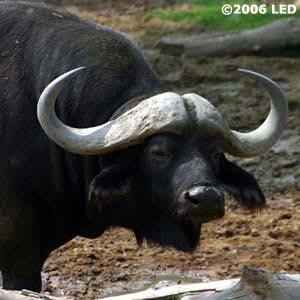
Gbo (or close enough)
Charles R. Saunders has posted a very helpful blog entry for the bovinically-challenged on his website. Saunder’s utterly bad-ass Sword-and-Sorcery 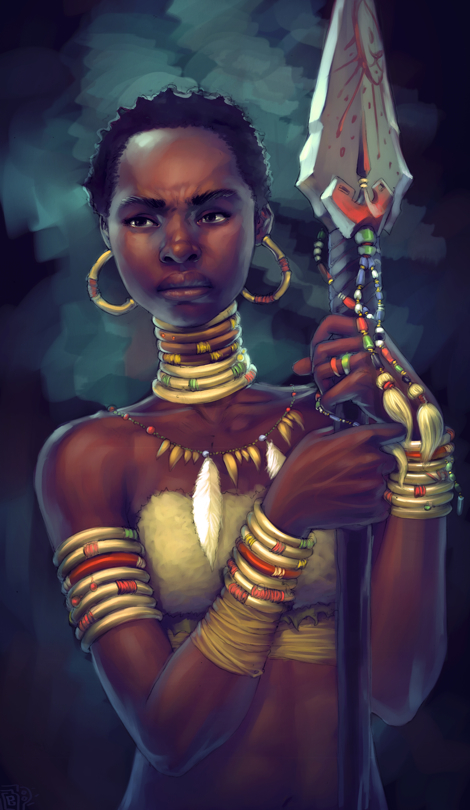 heroine, Dossouye, is partnered in her exploits by an equally deadly “side-kick” named Gbo. Gbo is not to be trifled with, nor is he an Asian water buffalo. Mr. Saunders sets the record straight.
heroine, Dossouye, is partnered in her exploits by an equally deadly “side-kick” named Gbo. Gbo is not to be trifled with, nor is he an Asian water buffalo. Mr. Saunders sets the record straight.
I first read about Dossouye and Gbo in Amazons! around 1980 (the story in question was “Agbewe’s Sword”). At the time, I was struck by how unique CRS’ pairing of warrior and bull was in fantasy fiction. Unique, but not unlikely. Having grown up around cattle all my life, it seemed far more probable that a (woman-) warrior would bestride such a steed than, say, a dragon. Bovines, even domesticated ones, are formidable beasts. Generally speaking, for any herd animal to survive, it must possess one of two traits: speed or lethality. Bovines aren’t renowned for their speed. There is a perfectly logical reason why the very capable predators of sub-Saharan Africa have never wiped out the Cape buffalo. Cape buffalos are bad news.
(Continue reading this post)
Wednesday, October 28, 2009
posted by Deuce Richardson

CROM!
WARNING: The review below has been written in full “snark” mode. It is about four thousand words long. You might want to grab a drink (a strong one) or a sandwich (or both)…
In the past few weeks, there have been persistent rumors of Jared Padelecki, the co-star of the series, Supernatural, being cast as a “young Conan.” This provoked dismay amongst many Conan fans. Personally, I had a “wait and see” attitude about it.
More troubling news was posted on the Official Robert E. Howard Forum recently, thanks to Pete Roncoli. A “casting breakdown,” to be used for casting actors to appear in the projected new Conan movie (set to begin shooting in Bulgaria in February 2010), has been leaked to the Internet. This guideline does more than reveal what a casting director is to look for. Putting together the clues within it provides a fairly detailed synopsis of the script. Many fans have already done so, and they are on the war-path like blood-mad Picts. Below you’ll find my commentary, accompanied by excerpts from the guideline as posted on Moviehole.net: (Continue reading this post)
Friday, September 11, 2009
posted by Steve Trout
When Karl Edward Wagner got “The Hour of the Dragon” into print sans editorial amendments, I was curious about the three terms for helmet that Howard had used, apparently not realizing, according to some, that they defined “three specific and different” styles.
When Conan dons the helmet, it’s a “plain morion”. Later, it’s a “basinet” and later still it is a “burganet.”
Researching this in my “Complete Encyclopedia of Arms and Weapons,” I quickly found that these are actually not very specific terms, but describe evolving trends, many of which are quite different from their predecessors. And rather than being distinct from each other, the burgonet and the morion merge in a hybrid known aptly as the burgonet-morion.
The basinet, which is commonly associated with jousting knights, actually started off as a simple cap with an attached coif, rather like Barry Smith’s depiction of Turanian helmets. It then evolved into the great bellows-visored helmet worn by knights in tourneys. A basinet offers good protection to the neck. The morion is associated with the Spanish conquistadors. Most were made of two plates joined along the middle with a mohawk-like “comb” running from front to back, but some were made with only one piece, which would make them similar to basinets.
The same is true of the burgonet, as it could also be made with one piece.
I think it is totally possible, even likely, that Howard knew exactly what these words meant when he used them. The Nemedian smith who created this helmet knew nothing of burganets, basinets, or morions when he made it — they wouldn’t be invented until our own age. Yet what he made had some basic characteristics of all, and in trying to describe what is basically an alien artifact from another age Howard used terms that would let a reader imagine something along the lines of what it was; a single-plate cap with an aventail or coif to protect the neck, a fall or eyeshade to keep the eyes sheltered, and an openable visor.
Wednesday, July 1, 2009
posted by Deuce Richardson
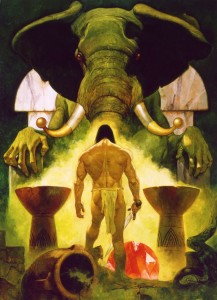
The tortured, transcosmic being that the youthful Conan encounters in “The Tower of the Elephant” seems to have a bit of an identity problem. Said entity refers to himself as “Yogah” once and as “Yag-kosha” twice. Robert E. Howard, in his role as omnipotent narrator, refers to the last exile of green Yag as “Yag-kosha, or Yogah” and as “Yag-kosha and Yogah.”
What to make of this? How should Yara’s ultra-telluric thrall be called? By what name did that pathetic entity refer to himself, in his innermost thoughts? Short of finding a lost letter relating to the matter, or the discovery of more “Hyborian Age Notes” of some sort, nothing absolutely definitive can be stated. However, I think something can definitely be speculated. (Continue reading this post)
Wednesday, May 13, 2009
posted by Deuce Richardson
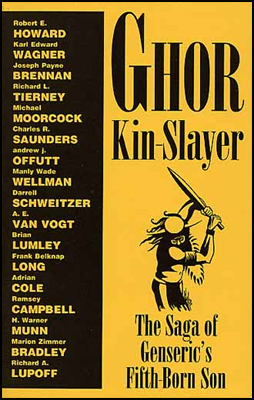 Sometime in the late 1970s, the Rev. Jonathan Bacon (a one-time member of REHupa) came up with a fairly cool idea. Bacon was the editor of Fantasy Crossroads, a Howard-centric fanzine. Through Glenn Lord, Bacon had acquired the Robert E. Howard fragment, “Genseric’s Fifth-Born Son” (the title derives from Lord, as far as I can ascertain), a part of the “James Allison” series of reincarnation tales. Bacon thought it would be interesting to bring together many of the active fantasy authors at that time and have them “complete” Howard’s fragment in a round-robin fashion. Robert E. Howard himself had participated in something similar when he wrote a chapter for “The Challenge From Beyond,” a round-robin tale published by the fanzine Fantasy Magazine in late 1935. In some ways, Bacon was just following a trail that REH had helped blaze. However, he chose to discard the Lord title for the fragment as a title for the entire work, deciding upon Ghor, Kin-Slayer as being a better designation.
Sometime in the late 1970s, the Rev. Jonathan Bacon (a one-time member of REHupa) came up with a fairly cool idea. Bacon was the editor of Fantasy Crossroads, a Howard-centric fanzine. Through Glenn Lord, Bacon had acquired the Robert E. Howard fragment, “Genseric’s Fifth-Born Son” (the title derives from Lord, as far as I can ascertain), a part of the “James Allison” series of reincarnation tales. Bacon thought it would be interesting to bring together many of the active fantasy authors at that time and have them “complete” Howard’s fragment in a round-robin fashion. Robert E. Howard himself had participated in something similar when he wrote a chapter for “The Challenge From Beyond,” a round-robin tale published by the fanzine Fantasy Magazine in late 1935. In some ways, Bacon was just following a trail that REH had helped blaze. However, he chose to discard the Lord title for the fragment as a title for the entire work, deciding upon Ghor, Kin-Slayer as being a better designation.
A more complete account of how Bacon strove to get all chapters of the collaboration he envisioned published is told elsewhere. It suffices to say that only twelve out of seventeen chapters ever saw print in Fantasy Crossroads, the last being in January of 1979.
Jonathan Bacon then dropped off the map. However, Glenn Lord still retained a complete manuscript of all seventeen chapters. Nearly twenty years later, March Michaud of Necronomicon Press, learning of the complete manuscript, decided that he would publish the entire round-robin tale. Utilizing the editing talents of Rusty Burke, Michaud got Ghor, Kin-Slayer published in August, 1997. I received my copy in early 1998.
Ghor, Kin-Slayer is a chimerical beast, no way around it. The contributors to the tale range from Karl Edward Wagner and Charles R. Saunders to A. E. Van Vogt and Marion Zimmer Bradley. I intend to examine the whole story on a chapter-by-chapter basis. For those of you who tend toward spoiler-phobia, I suggest you stop reading right about now.
(Continue reading this post)
Wednesday, April 22, 2009
posted by Deuce Richardson
“Why or how, I am not certain, but he spent some months among a tribe of the Æsir…”
Robert E. Howard in a letter to P. Schuyler Miller.
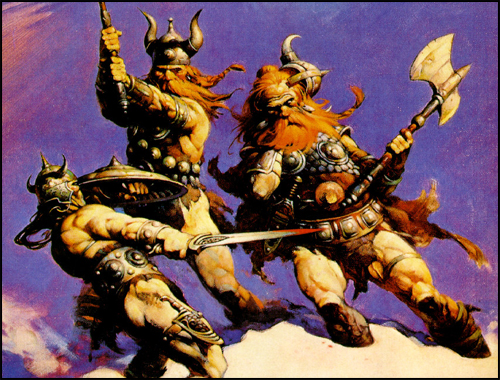
“The Frost-Giant’s Daughter” is well-beloved by Conan fans, with good reason. While containing moments of true poetry, it still packs wain-loads of bloody action into a few short pages. Some have theorized that this yarn is the very first adventure in the Cimmerian’s career, chronologically. Such would seem to be indicated by Robert E. Howard’s 1936 letter to P. Schuyler Miller.
While I have a few niggling doubts as to that placement (such doubts to be addressed at a later time), that doesn’t stop me extrapolating therefrom. If “The Frost-Giant’s Daughter” is a chronicle from that period of “some months” when Conan first ventured out of Cimmeria into Nordheim (as Howard wrote to Miller), then clues within that tale possibly cast light on the Cimmerian murkiness of Conan’s years immediately prior to his bidding farewell to his homeland.
(Continue reading this post)
Wednesday, April 15, 2009
posted by Deuce Richardson
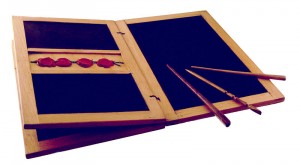
stylus
noun
1. an instrument for writing, marking or incising.
[Origin: from the Latin stylus, “a pointed instrument” ]
papyrus
noun
1. a writing material made of strips of the pith of the papyrus plant laid evenly across similar strips in thin layers, the whole being soaked and then dried under pressure; used by the ancient Egyptians, Greeks and Romans.
[Origin: from the Greek papyros, “reed” ]
HOWARD’S USAGE:
Now he laid down the golden stylus with which he had been laboriously scrawling on waxed papyrus, rested his chin on his fist, and fixed his smoldering blue eyes enviously on the man who stood before him.
[from “The Phoenix on the Sword”]
It seems seldom recognized or appreciated by many Conan fans (especially those who “live by the Lancers”), that in the first scene Robert E. Howard ever wrote featuring the redoubtable Cimmerian, Conan is wielding a writing utensil, not a sword. “The Phoenix on the Sword” was the first Conan tale ever written, though it takes place late in his career (and near the end of the Lancer series), shortly after he became king. The readers of the December 1932 issue of Weird Tales first saw Conan the Cimmerian at a writing-table, using a stylus to incise a sheet of waxed papyrus.
(Continue reading this post)
Wednesday, March 11, 2009
posted by Deuce Richardson
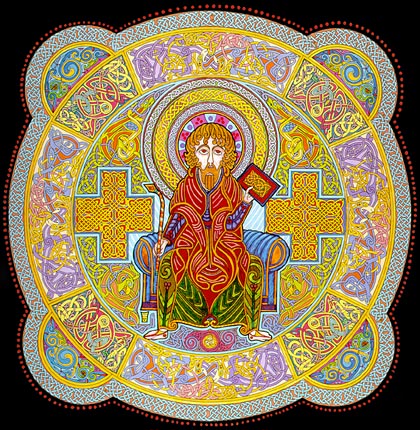
“Know, oh prince, that between the years when the oceans drank Atlantis and the gleaming cities, and the years of the rise of the sons of Aryas, there was an Age undreamed of… (…) Hither came Conan the Cimmerian… “
– The Nemedian Chronicles
In December, 1932, the words above first introduced Conan the Cimmerian and his Hyborian Age to twentieth century America. Readers from every generation since have been intrigued by that heading from Chapter I of “The Phoenix on the Sword.” In a previous post, I discussed just what Robert E. Howard might have meant by “the sons of Aryas.” Why would a ‘Nemedian chronicler’ from Hyborian Age Nemedia speak of the Hyborian Age as “an Age undreamed of”?
(Continue reading this post)




 heroine,
heroine, 

 Sometime in the late 1970s, the Rev. Jonathan Bacon (a one-time member of REHupa) came up with a fairly cool idea. Bacon was the editor of Fantasy Crossroads, a Howard-centric fanzine. Through Glenn Lord, Bacon had acquired the Robert E. Howard fragment, “Genseric’s Fifth-Born Son” (the title derives from Lord, as far as I can ascertain), a part of the “James Allison” series of reincarnation tales. Bacon thought it would be interesting to bring together many of the active fantasy authors at that time and have them “complete” Howard’s fragment in a round-robin fashion. Robert E. Howard himself had participated in something similar when he wrote a chapter for “
Sometime in the late 1970s, the Rev. Jonathan Bacon (a one-time member of REHupa) came up with a fairly cool idea. Bacon was the editor of Fantasy Crossroads, a Howard-centric fanzine. Through Glenn Lord, Bacon had acquired the Robert E. Howard fragment, “Genseric’s Fifth-Born Son” (the title derives from Lord, as far as I can ascertain), a part of the “James Allison” series of reincarnation tales. Bacon thought it would be interesting to bring together many of the active fantasy authors at that time and have them “complete” Howard’s fragment in a round-robin fashion. Robert E. Howard himself had participated in something similar when he wrote a chapter for “


